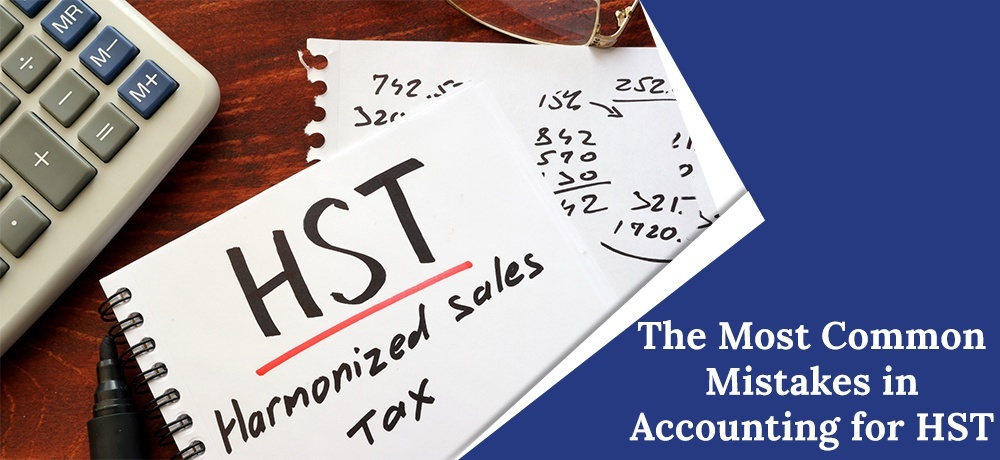The Most Common Mistakes in Accounting for HST

Accounting and tax are part and parcel of doing business. Understanding how these technical aspects work is essential right from the start to avoid hassles in the long run. To save your company from accountancy mishaps, it’s best to consult an industry expert like a professional chartered accountant. They understand what kind of accounts must be maintained and how they are prepared.
Going about accounting and tax procedures without adequate knowledge of the rules that govern them can be catastrophic. Many small businesses make little, or not-so-little, mistakes with their financial statements and while filing taxes their government filings for HST and other taxes.
To save yourself the hassles associated with business accounting and tax, there are several things you need to understand and learn. Let’s start with this list of the most common mistakes people make when accounting for HST (harmonized sales tax).
1. Total Line 101 taxable sales do not match revenue on the tax return. This mistake typically happens when the HST remittance frequency is quarterly or monthly because the accounting books are not fully completed at the end of each quarter or month before the HST is remitted. At year-end, always check that your total sales per the tax return match the total of Line101 for all HST remittances. If they do not match - we recommend an analysis of where the difference occurred, and an amended HST remittance be filed.
2. Taking HST with a client deposit. A client deposit is a liability to the business as no service or product has been provided at the time of the deposit and as such no taxable supply has occurred. We always recommend taking deposits without HST. The HST should be calculated on the final invoice after the service has been rendered and then the deposit is credited to the client's account receivable.
3. Taking the full HST (ITC) on the purchase of an asset purchased with a loan. It often results in a large refund which immediately triggers a query from CRA (Canada Revenue Agency). According to CRA, the HST (ITC) on a fixed asset that is financed should be allocated over the term of the loan.
4. Accounting for HST refunds as income. A refund should be posted back to the HST payable account to keep it in balance. Some accounting software such as QuickBooks will allow you to file the HST remittance and create an account receivable. In this case, receive the refund against the receivable account for the Receiver General (the central treasurer and accountant of the federal government).
5. Taking an HST (ITC) on personal expenses. It is particularly easy to do for expenses such as meals; vehicle expenses; assets that have a personal use portion (for example a snowmobile); and, personal expenses paid by the business credit card. We recommend preparing an analysis of the transaction showing the separation of the business and personal portion before posting it to the books. Keep a record of your analysis with the transaction paperwork.
6. Claiming an HST (ITC) on insurance. Insurance companies are only required to add the provincial portion of HST to their invoices, and unfortunately, this amount cannot be claimed as an ITC. You can, however, add the full insurance amount plus tax as a deductible expense for accounting and tax purposes.
To avoid these and other mistakes, reach out to the experts at Morley CPA Professional Corporation. With over thirty years of experience, we are professional accountants in Gravenhurst and Barrie, ON, and are well qualified to navigate you through the numbers so you get and give the correct insights to make better your business decisions and that increase your bottom line profitability.
For a complete list of services, please click here. If you have any questions about accounting and taxes, we’d love to hear from you. Please contact us here.